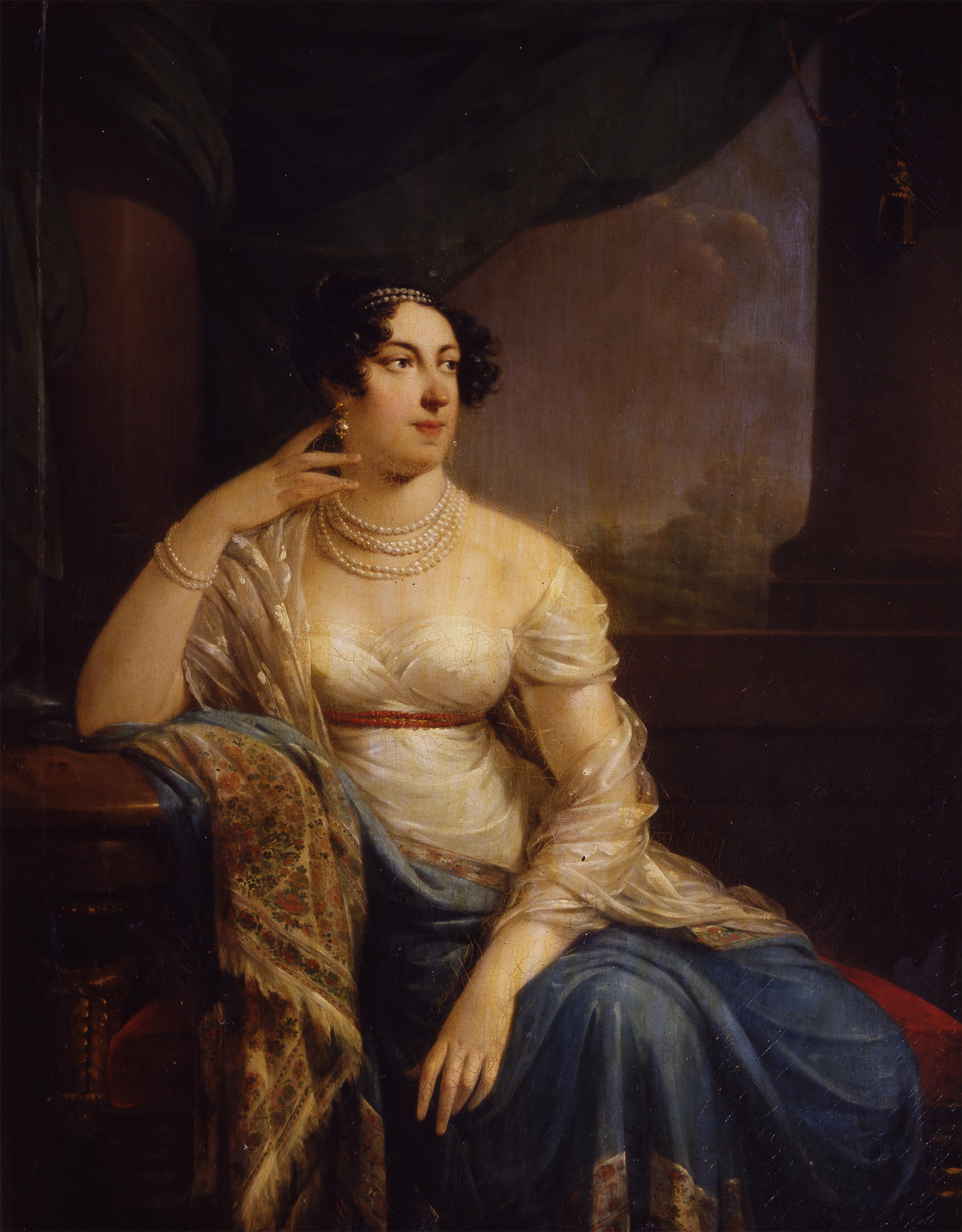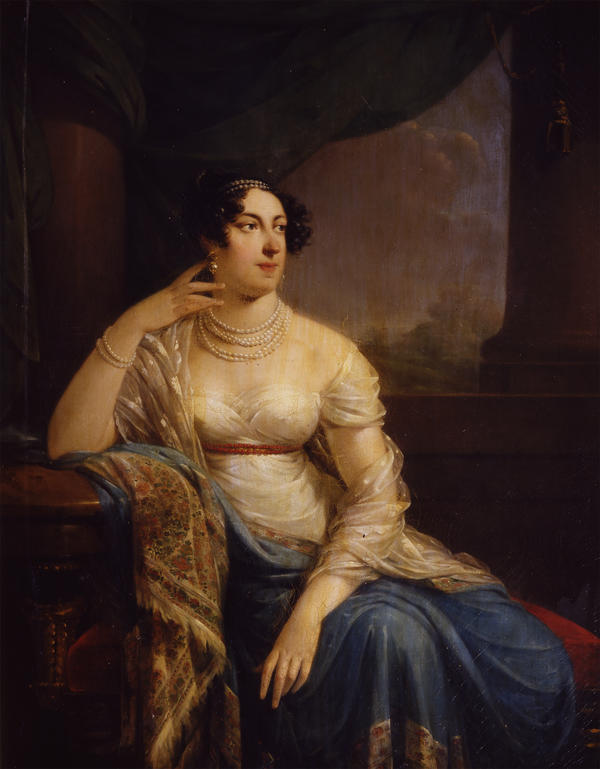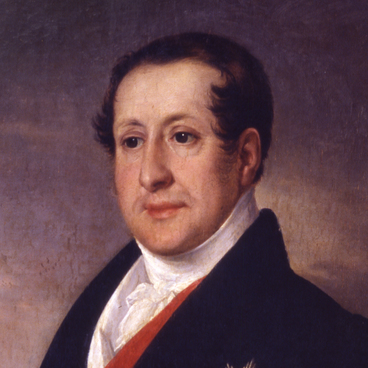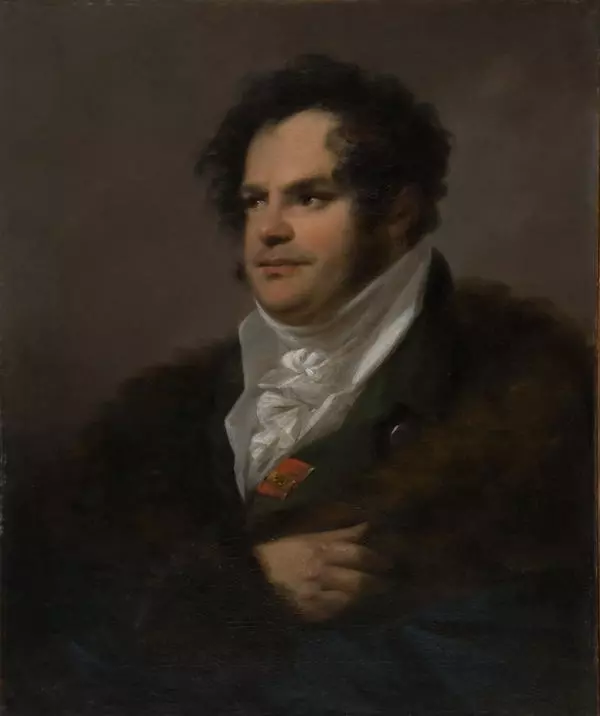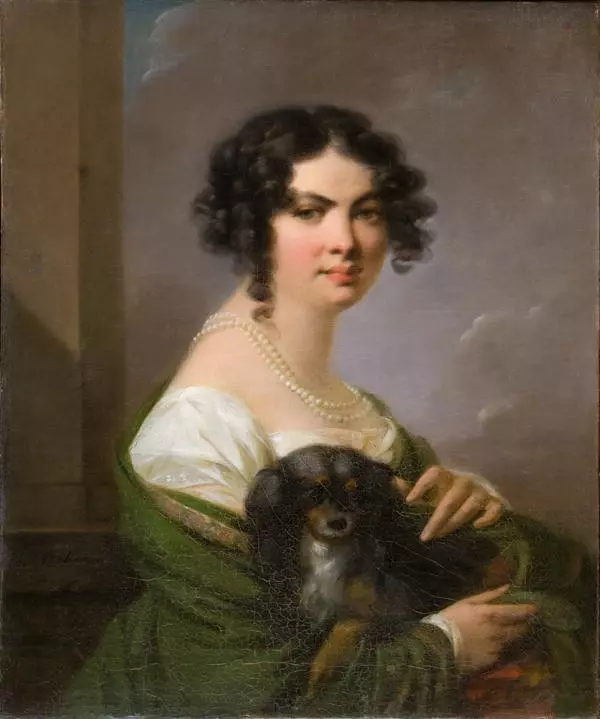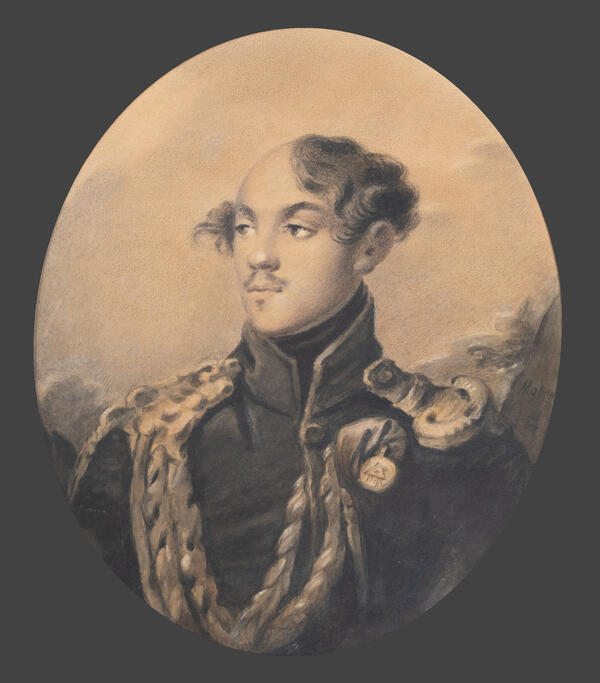Portrait paintings in interiors where a model is presented surrounded by various domestic objects became all the fashion in the first half of the 19th century. Now a story about the model can be told not only by the clothes they are wearing or decorations they were awarded. Objects surrounding a person can often help construe a whole narrative of their life. The portrait of Countess Natalya Yuryevna Saltykova-Golovkina from the Radishchev Museum collection by well-known secular portraitist Alexander Molinari who lived in St. Petersburg from 1806 to 1816 is an example of that.
The portrait of Countess N.Yu. Saltykova-Golovkina is rather a ‘demonstration portrait’ or a ‘posture-portrait’ where multiple accessories, not the person’s inner world or their individuality, become dominant. Molinari presented his model sitting in an armchair. We see a landscape half-hidden by a green curtain and columns behind her back. The elegant low-cut muslin dress in the empire style with a high waistline double-corded with coral beads. The gauze wrap draping the shoulders. The expensive Indian cashmere pashmina with diapered edges thrown casually on the lap. The graceful turn of the head, the soft lines of the sloping shoulders, the slim neck, the smooth velvety skin, the fresh bright lips. The shapely arm rests on a mahogany table demonstrating a double string of pearls and exquisite earrings of large gold-set baroque tear-drop pearls.
The portrait of Countess N.Yu. Saltykova-Golovkina is rather a ‘demonstration portrait’ or a ‘posture-portrait’ where multiple accessories, not the person’s inner world or their individuality, become dominant. Molinari presented his model sitting in an armchair. We see a landscape half-hidden by a green curtain and columns behind her back. The elegant low-cut muslin dress in the empire style with a high waistline double-corded with coral beads. The gauze wrap draping the shoulders. The expensive Indian cashmere pashmina with diapered edges thrown casually on the lap. The graceful turn of the head, the soft lines of the sloping shoulders, the slim neck, the smooth velvety skin, the fresh bright lips. The shapely arm rests on a mahogany table demonstrating a double string of pearls and exquisite earrings of large gold-set baroque tear-drop pearls.
The young woman’s face with dark eyes looking far ahead is framed with lovelocks arranged to casually escape from a loose knot in the nape. Strings of large pearls decorate the hair and several times encircle the snow-white neck. We see a court lady, her face is haughty, her posture is dignified. Everything in Saltykova’s portrait is meant to emphasise her wealth and high social standing – the colour rendering, the composition, the carefully selected and exquisitely painted accessories, and the elegant costume. Yelena Yuryevna Khvoschinskaya, the great-grand daughter of Countess Saltykova, reminisced that her great grandmother had been “remarkably beautiful and preserved her beauty until old age. She always dressed superbly and despite her age was fond of the pink colour which did not look too young for her as she herself was good-looking and fresh.” Saltykova’s contemporaries noted that ‘were Nataya Yuryevna’s facial features not so large, she could be deemed a perfect beauty. Her youth, freshness, and coquetry drove many a man crazy. Not particularly clever, she was impossibly charming’.
